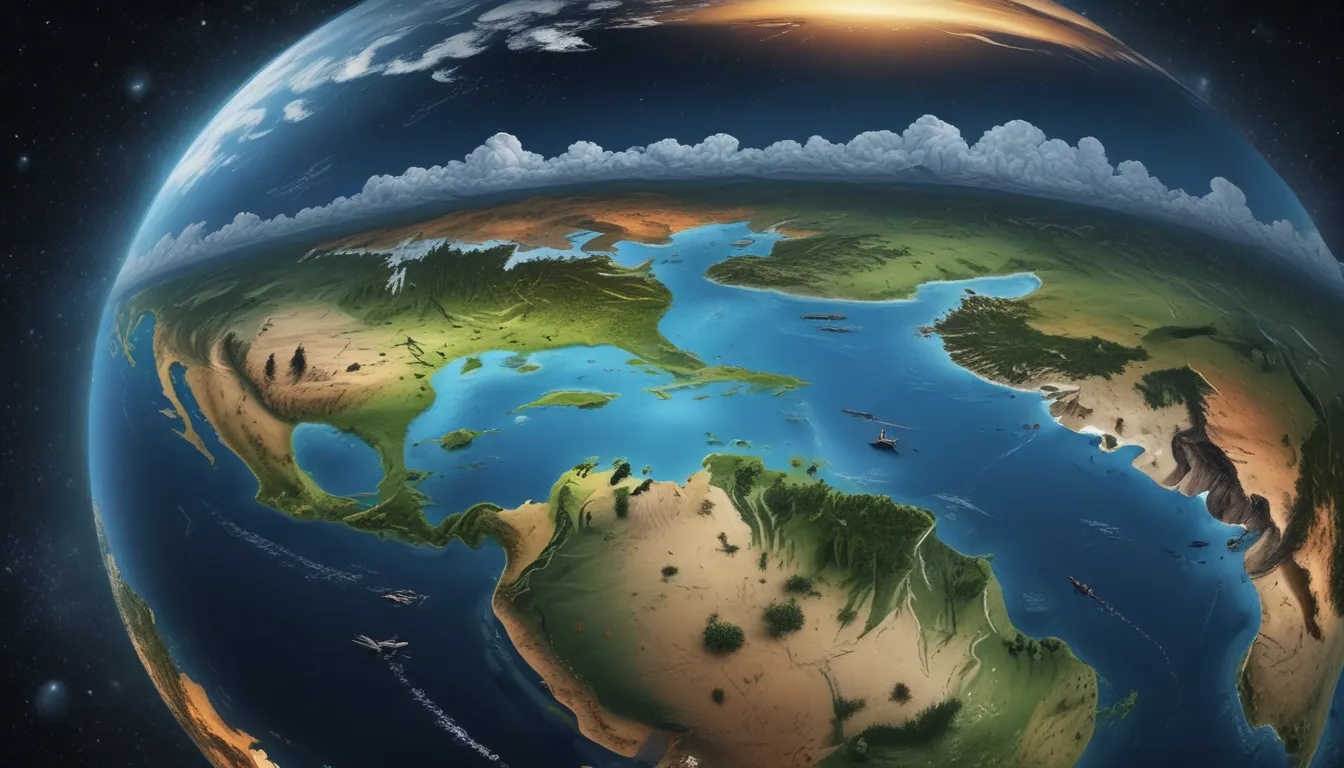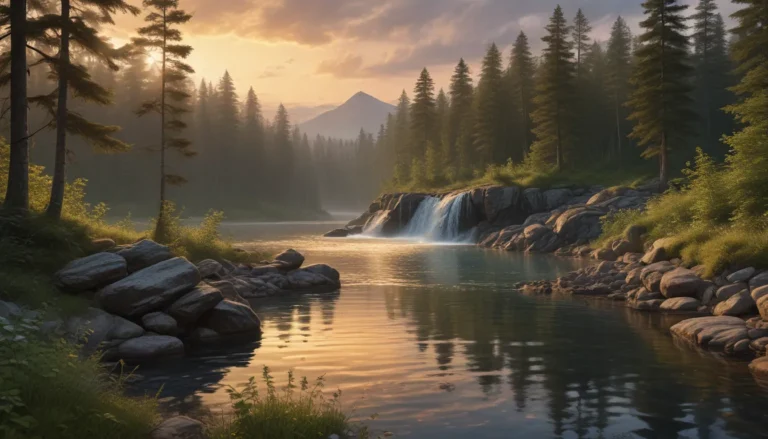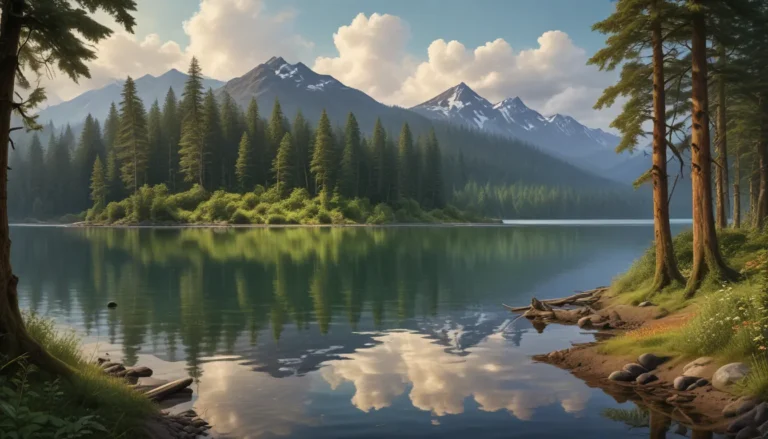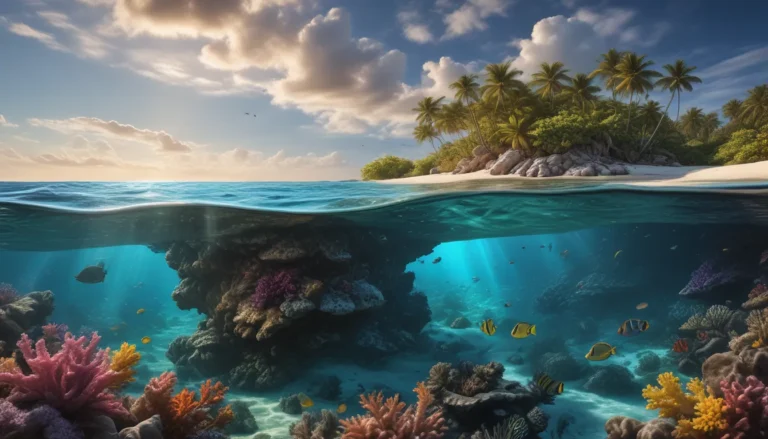The pictures we use in our articles might not show exactly what the words say. We choose these pictures to make you interested in reading more. The pictures work together with the words but don’t take their place. The words still tell you the important facts.
Welcome to a journey through the wonders of our planet Earth! From its unique geology to its diverse ecosystems, Earth is truly a remarkable place in our solar system. Let's dive into 17 fascinating facts that will deepen our appreciation for the world we call home.
Earth: A Vibrant and Unique Planet
Earth is a captivating planet that boasts a variety of ecosystems, powerful magnetic fields, and a range of climates. With 4.5 billion years of history, Earth's ever-evolving nature, from shifting tectonic plates to developing ecosystems, makes it a fascinating and continuously changing planet worth marveling at and protecting.
Earth’s Position in the Solar System
- Earth is the third planet from the Sun, situated at an average distance of about 93 million miles, making it a pivotal player in our solar system.
Diverse Ecosystems
- Earth is the only known planet with a diverse ecosystem that ranges from lush rainforests to expansive deserts, showcasing a wide variety of plant and animal species, making it a vibrant and unique planet.
The Blue Planet
- About 71% of Earth's surface is covered by water, with the remaining 29% being landmasses, including continents and islands, creating a stunning contrast on our planet.
Earth’s Shield: The Magnetic Field
- Earth's powerful magnetic field, generated by its molten iron core, shields the planet's atmosphere and biosphere from harmful solar radiation, safeguarding life on Earth.
Seasons of Earth
- Earth experiences four distinct seasons due to the tilt of its axis, providing a diverse range of climates and weather patterns that shape our planet's landscapes.
The Cradle of Life
- Earth is the only planet known to support life, thanks to its perfect combination of essential elements and conditions that sustain a rich and diverse biosphere, including human beings.
Earth’s Companion: The Moon
- Earth is accompanied by a single natural satellite, known as the Moon, which plays a vital role in stabilizing Earth's rotation and tides, influencing the planet's ecosystems.
Earth’s Life-Sustaining Atmosphere
- Earth's atmosphere mainly consists of nitrogen (78%) and oxygen (21%), creating the ideal mix for the existence of life as we know it on our planet.
The Age of Earth
- Scientists estimate that Earth formed around 4.5 billion years ago, emerging from the debris left behind by the formation of the Sun, showcasing the rich history of our planet.
The Gravitational Force
- Earth's gravity, exerted by the planet, holds objects firmly on its surface, maintaining the stability of Earth and its orbit, ensuring the balance of our solar system.
The Pacific Ocean: Earth’s Majesty
- Earth's largest ocean, the Pacific Ocean, spans approximately 63 million square miles, making it not only the largest but also the deepest ocean on our planet, brimming with diverse marine life.
Earth’s Climate Mosaic
- Earth's varied geography gives rise to a diverse range of climates, from icy polar regions to scorching hot deserts, each with its unique characteristics and ecological systems.
The Majestic Mount Everest
- Mount Everest in the Himalayas stands as the highest point on Earth, towering at an impressive height of 29,029 feet above sea level, symbolizing the planet's grandeur.
Earth’s Density Conundrum
- With its solid core and high concentration of materials, Earth is the densest planet in our solar system, showcasing its unique composition and structure.
The Ozone Layer: Earth’s Protective Shield
- Earth's ozone layer in the stratosphere absorbs harmful ultraviolet radiation from the Sun, protecting life on the planet's surface and maintaining a conducive environment for living organisms.
Geological Marvels of Earth
- From towering mountains to breathtaking canyons, Earth displays an incredible array of geological formations shaped by millions of years of natural processes, reflecting the planet's dynamic nature.
The Ever-Changing Earth
- Earth's dynamic nature is visible in its shifting tectonic plates, evolving ecosystems, and changing climate, making it a fascinating and continuously evolving planet worth exploring and studying.
Conclusion
Earth is a planet of wonder and beauty, with a rich history and diverse characteristics that continue to captivate our imaginations. As we delve deeper into understanding and appreciating our planet, it becomes evident that Earth is a delicate balance of life and natural systems that require our protection and care for future generations to enjoy its splendor. Let us embrace the marvels of our planet and unite in preserving its natural heritage for the betterment of all.
FAQs
- How old is the Earth?
-
The Earth is estimated to be around 4.5 billion years old.
-
What is the Earth's atmosphere made of?
-
The Earth's atmosphere is primarily composed of nitrogen (about 78%) and oxygen (about 21%), with trace amounts of other gases.
-
How many continents are there on Earth?
-
There are seven continents on Earth: Africa, Antarctica, Asia, Europe, North America, Australia, and South America.
-
What is the largest ocean on Earth?
-
The Pacific Ocean is the largest ocean on Earth, covering more than 30% of the planet's surface.
-
Is Earth the only planet with life?
-
Earth is currently the only known planet to harbor life, although scientists continue to explore other celestial bodies for signs of life.
-
What causes the seasons on Earth?
-
The seasons on Earth are a result of the tilt of its axis as it orbits around the Sun, leading to varying amounts of sunlight reaching different parts of the planet throughout the year.
-
Can earthquakes occur anywhere on Earth?
-
Earthquakes can happen in various regions worldwide, with tectonic plate boundaries being more prone to seismic activity.
-
How did the Earth form?
-
The Earth formed from the materials present in the early solar system, coming together due to gravity to shape our planet over billions of years.
-
Is Earth the only planet with liquid water?
-
While there may be traces of water on other celestial bodies, Earth is distinguished as the only known planet with abundant liquid water.
-
Can humans impact Earth's climate directly?
- Human activities such as burning fossil fuels and deforestation have a significant impact on Earth's climate by releasing greenhouse gases, leading to environmental changes.
Embracing the Wonders of Earth
As we celebrate the magnificence of Earth, let us remember that our planet is a precious gem that requires our collective efforts to preserve its beauty and sustainability. By educating ourselves on Earth's intricate systems and taking proactive steps to protect the environment, we can ensure a thriving planet for generations to come. Let's continue to explore, learn, and cherish the remarkable planet we call home.






